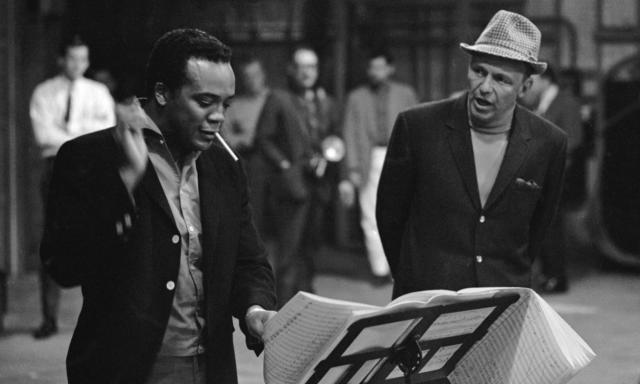How Quincy Jones and Frank Sinatra’s Bold Collaboration Shaped Music History
In 1958, Quincy Jones was an emerging talent in Paris, navigating the European jazz scene when a unique opportunity came his way. Grace Kelly, the princess of Monaco, was organizing a charity concert for the United Nations Refugee Fund and had secured Frank Sinatra to perform. However, Kelly needed Jones’s help to find Sinatra a suitable orchestra, so he quickly assembled 55 skilled musicians and headed to the French Riviera. Despite Sinatra’s initial indifference, trusting Jones only with, “You’ve heard the records; you know what to do,” the orchestra’s flawless performance left an impression. Sinatra, famous for his improvisational flair, pushed the musicians beyond the rehearsed pieces, but they kept pace effortlessly. Impressed, he told Jones afterward, “Nice job, Q.” This early encounter marked the beginning of a groundbreaking partnership that would define American music, culminating in Sinatra’s iconic recording of “Fly Me to the Moon.”
Jones, who passed away at 91, played a pivotal role in reshaping the music industry. His contributions ranged from arranging for jazz greats to launching Michael Jackson’s solo career and producing the legendary charity single “We Are the World.” His influence extended to the hip-hop world, inspiring icons like Russell Simmons and P Diddy, and to music journalism with the creation of *Vibe* magazine. However, Jones’s ascent to becoming one of music’s most revered figures began with his collaboration with Sinatra. As a young Black musician daring to rise within an industry marked by racial barriers, Jones’s partnership with Sinatra was as audacious as it was historic. Reflecting on their first project, Jones recalled with pride, “I was 29, they were all much older, but when I played that first arrangement, Frank loved it.”
Living in Paris, Jones had immersed himself in music theory under the esteemed Nadia Boulanger, honing his craft while confronting the racial injustices of the 1950s. These challenges only sharpened his resolve, turning him into a charismatic figure who commanded respect in every room he entered. Born in Chicago’s rough South Side and raised by a grandmother who survived the brutality of slavery, Jones had always faced adversity head-on. His experiences shaped him into a resilient, passionate artist, driven to redefine music and challenge expectations. By the time he joined Sinatra, his ambition was as formidable as his talent, allowing him to thrive alongside one of the most complex personalities in music.
Their first major collaboration in 1964 was the album *It Might as Well Be Swing*. Sinatra, a massive star then nearing 50, needed to stay relevant as rock’n’roll surged in popularity. With Jones’s arrangements, Sinatra’s voice became part of the orchestra itself, not merely a lead vocal, helping him remain fresh and distinctive. Their rendition of “Fly Me to the Moon” transformed the song, shifting it from its original waltz tempo into a smooth, swinging classic. Sinatra’s admiration for Jones was evident in his live shows, often acknowledging him as “one of the bright young stars” behind the orchestra’s success.
Jones’s journey with Sinatra opened doors beyond music recording; he soon broke ground in Hollywood, scoring films and setting the stage for Black musicians in an industry then dominated by white composers. His work influenced scores in iconic projects from *The Italian Job* to *Austin Powers*, leaving a legacy that later inspired figures like Pharrell and the RZA. For Jones, however, his relationship with Sinatra extended beyond professional boundaries. They developed a deep friendship, symbolized by the pinky ring Sinatra left him—an heirloom that Jones cherished as a memento of their enduring bond.
To Jones, the ring represented Sinatra’s loyalty and gratitude and embodied his own bold spirit. Working with “The Chairman of the Board” wasn’t just a career move; it was a testament to his conviction that talent and vision could overcome any boundary. In his own words, Jones once said Sinatra had taken him to “a whole new planet.” Their partnership didn’t just change American music; it also set a standard for future generations, proving that true artistry knows no limits.













Post Comment